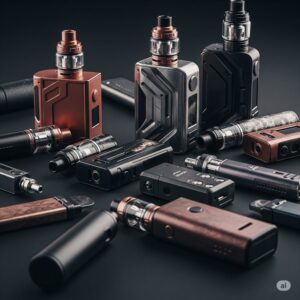Premium Pod Systems Compete in a Crowded Market
Premium pod systems have become a major focus in the vaping industry, especially as more brands enter an already packed space. These compact devices offer users convenience, design, and advanced features, but their popularity has also sparked fierce competition. As innovation accelerates, manufacturers race to offer longer battery life, better flavor delivery, and smarter chipsets. This rapid evolution creates both opportunities and challenges. Consumers now face a wider array of choices than ever before, which demands stronger brand positioning and clearer value propositions. Meanwhile, price sensitivity continues to play a significant role, pushing companies to find the right balance between cost and quality. In such a dynamic environment, only products that bring something unique can hope to stand out for long.
Premium Pod Brands Shift Focus to Differentiation
With the market becoming saturated, leading companies are shifting focus toward differentiation through design, materials, and technology. Some brands now highlight sustainable practices by introducing recyclable components or refillable systems. Others explore exclusive flavor partnerships or collaborations with artists and designers. These efforts aim to create emotional connections with consumers. Moreover, real-time performance data has become a growing trend, offering users insights into puff count, battery usage, and even draw strength. While these features appeal to tech-savvy users, they also raise production costs. As a result, only well-funded manufacturers can afford to experiment at this scale. Despite the risks, this strategy helps create a clear identity, something essential when shelf space and online visibility are limited.
High-End Devices Meet Growing User Expectations
In response to increasingly informed consumers, high-end devices now incorporate advanced safety features and customizable settings. Many offer precise airflow control, adjustable wattage, and leak-resistant technology. This reflects a shift in expectations: users no longer settle for just convenience. Instead, they want tailored experiences that meet specific preferences. To keep up, brands regularly release firmware updates and companion apps. These digital enhancements add layers of control and personalization, further distinguishing top-tier products from entry-level alternatives. However, with complexity comes the need for user education. Tutorials, community support, and dedicated customer service become crucial components of post-sale engagement. Without them, even the most innovative features can go unused or misunderstood.
Price Wars and Market Saturation Pose Challenges
As more competitors enter the scene, pricing pressures intensify. Some brands reduce margins just to stay relevant, while others bundle accessories or offer loyalty programs. This race to the bottom may benefit short-term buyers, but it risks undermining product quality. Furthermore, newcomers often rely on aggressive online marketing, creating a noisy environment for consumers trying to make informed choices. The sheer volume of products available, many with similar specifications, can create confusion. To address this, retailers have begun curating selections and offering side-by-side comparisons. These services help users navigate the crowded landscape, but they also add to operational costs. The challenge remains: how to deliver value without sacrificing credibility or consumer trust.
Premium Segment Pushes Regulatory Conversations Forward
The rise of high-end products has also prompted renewed attention from policymakers and health authorities. Since these devices often incorporate features like refillable tanks or custom firmware, they fall into gray areas within current regulations. Some experts argue for clearer guidelines, especially as usage increases among younger demographics. Brands now face pressure not only to comply but also to demonstrate transparency. Labels, manuals, and marketing materials undergo stricter scrutiny. While this may slow time to market, it also elevates the standard across the board. In the long run, stronger oversight could help distinguish responsible manufacturers from those cutting corners. As the industry matures, the push for safety, clarity, and consumer trust will likely continue to shape product development and public perception.














